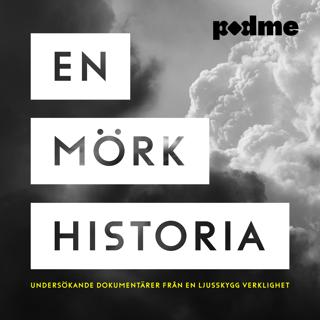
Eva Peron: Argentina’s Evita
Eva Peron – otherwise known as Evita - became an icon in 1940s Argentina, famous for her passionate speeches and populist rhetoric. Born into poverty, she moved to Buenos Aries at the age of 15 to become an actress, and was soon starring in radio soap operas.In 1945, she married Colonel Juan Peron, a rising figure in the Argentinian military, and supported his campaign to become president. After he won the election, she set up the Eva Perón Foundation, to distribute money, food and medicines to the poor. It won her the adulation of Argentina’s working classes, although some believed she exploited her position for personal gain.Eva fell ill with cancer, and on 17 October 1951, she made her last major public appearance from the presidential palace balcony. It was to be her most famous speech, later inspiring the award-winning song, Don’t Cry for Me Argentina, from the musical Evita.Eye-witness accounts brought to life by archive. Witness History is for those fascinated by the past. We take you to the events that have shaped our world through the eyes of the people who were there. For nine minutes every day, we take you back in time and all over the world, to examine wars, coups, scientific discoveries, cultural moments and much more. Recent episodes explore everything from football in Brazil, the history of the ‘Indian Titanic’ and the invention of air fryers, to Public Enemy’s Fight The Power, subway art and the political crisis in Georgia. We look at the lives of some of the most famous leaders, artists, scientists and personalities in history, including: visionary architect Antoni Gaudi and the design of the Sagrada Familia; Michael Jordan and his bespoke Nike trainers; Princess Diana at the Taj Mahal; and Görel Hanser, manager of legendary Swedish pop band Abba on the influence they’ve had on the music industry. You can learn all about fascinating and surprising stories, such as the time an Iraqi journalist hurled his shoes at the President of the United States in protest of America’s occupation of Iraq; the creation of the Hollywood commercial that changed advertising forever; and the ascent of the first Aboriginal MP.(Photo: Eva Peron in 1951. Credit: Bettmann/Getty Images)
14 Feb 10min

Paul Keating's Redfern speech
On 10 December 1992, Australia’s Prime Minister, Paul Keating, addressed a crowd in a Sydney suburb called Redfern, to mark the UN’s International Year of the World’s Indigenous People. What started as a low-key affair, is remembered as one of the most powerful speeches in Australian history. It was the first time an Australian Prime Minister took moral responsibility for the horrors committed against Indigenous Australians. The speech received significant backlash, but it’s often credited with paving the way for a later Australian Prime Minister, Kevin Rudd, to issue a formal apology to Indigenous Australians. In 2007, ABC radio listeners voted it the third most unforgettable speech in history behind Martin Luther King’s 'I have a dream' speech and Jesus’ Sermon on the Mount. Don Watson wrote the speech. He speaks to Ben Henderson.Eye-witness accounts brought to life by archive. Witness History is for those fascinated by the past. We take you to the events that have shaped our world through the eyes of the people who were there. For nine minutes every day, we take you back in time and all over the world, to examine wars, coups, scientific discoveries, cultural moments and much more. Recent episodes explore everything from football in Brazil, the history of the ‘Indian Titanic’ and the invention of air fryers, to Public Enemy’s Fight The Power, subway art and the political crisis in Georgia. We look at the lives of some of the most famous leaders, artists, scientists and personalities in history, including: visionary architect Antoni Gaudi and the design of the Sagrada Familia; Michael Jordan and his bespoke Nike trainers; Princess Diana at the Taj Mahal; and Görel Hanser, manager of legendary Swedish pop band Abba on the influence they’ve had on the music industry. You can learn all about fascinating and surprising stories, such as the time an Iraqi journalist hurled his shoes at the President of the United States in protest of America’s occupation of Iraq; the creation of the Hollywood commercial that changed advertising forever; and the ascent of the first Aboriginal MP.(Audio of Redfern speech: National Archives of Australia)(Photo: Prime Minister Paul Keating at Redfern. Credit: Pickett/The Sydney Morning Herald/Fairfax Media via Getty Images)
13 Feb 9min

Mary Fisher's 'A Whisper of Aids' speech
When Mary Fisher was diagnosed with HIV in 1991 she did not represent the typical stereotype of someone HIV-positive. She was white, heterosexual and contracted the disease in marriage. She used her platform at the Republican National Convention in Texas in 1992 to try and change people's treatment of those carrying the Aids virus. The speech was broadcast live to millions of people via the major US TV outlets. She argued that she did not want her sons, aged four and two, to face stigma from the "whisper of Aids" once she had died. It is ranked as one of the most important speeches in the US in the 20th Century. Mary Fisher recalls the moment she delivered the speech to Josephine McDermott.Eye-witness accounts brought to life by archive. Witness History is for those fascinated by the past. We take you to the events that have shaped our world through the eyes of the people who were there. For nine minutes every day, we take you back in time and all over the world, to examine wars, coups, scientific discoveries, cultural moments and much more. Recent episodes explore everything from football in Brazil, the history of the ‘Indian Titanic’ and the invention of air fryers, to Public Enemy’s Fight The Power, subway art and the political crisis in Georgia. We look at the lives of some of the most famous leaders, artists, scientists and personalities in history, including: visionary architect Antoni Gaudi and the design of the Sagrada Familia; Michael Jordan and his bespoke Nike trainers; Princess Diana at the Taj Mahal; and Görel Hanser, manager of legendary Swedish pop band Abba on the influence they’ve had on the music industry. You can learn all about fascinating and surprising stories, such as the time an Iraqi journalist hurled his shoes at the President of the United States in protest of America’s occupation of Iraq; the creation of the Hollywood commercial that changed advertising forever; and the ascent of the first Aboriginal MP.(Photo: Mary Fisher delivers her speech in 1992. Credit: AP)
12 Feb 10min

Eisenhower's farewell address
In January 1961, US President Dwight Eisenhower ended his time in the White House with a farewell address regarded as one of the greatest speeches made by a US president. He warned Americans against the "military-industrial complex", a phrase that he coined. In 2018, Louise Hidalgo looked back on the speech with Dwight Eisenhower's grandson, David Eisenhower, and one of his speechwriters, Stephen Hess.Eye-witness accounts brought to life by archive. Witness History is for those fascinated by the past. We take you to the events that have shaped our world through the eyes of the people who were there. For nine minutes every day, we take you back in time and all over the world, to examine wars, coups, scientific discoveries, cultural moments and much more. Recent episodes explore everything from football in Brazil, the history of the ‘Indian Titanic’ and the invention of air fryers, to Public Enemy’s Fight The Power, subway art and the political crisis in Georgia. We look at the lives of some of the most famous leaders, artists, scientists and personalities in history, including: visionary architect Antoni Gaudi and the design of the Sagrada Familia; Michael Jordan and his bespoke Nike trainers; Princess Diana at the Taj Mahal; and Görel Hanser, manager of legendary Swedish pop band Abba on the influence they’ve had on the music industry. You can learn all about fascinating and surprising stories, such as the time an Iraqi journalist hurled his shoes at the President of the United States in protest of America’s occupation of Iraq; the creation of the Hollywood commercial that changed advertising forever; and the ascent of the first Aboriginal MP.(Photo: President Dwight Eisenhower. Credit: Bettmann/Contributor via Getty Images)
11 Feb 9min

La Pasionaria: Heroine of the Spanish Civil War
Dolores Ibárruri was nicknamed La Pasionaria for her fiery speeches to the anti-fascist forces during the Spanish civil war. The fighting had begun in July 1936. Troops, led by General Francisco Franco, launched an uprising against the democratically-elected government. These Nationalist rebels were backed by Adolf Hitler in Germany and Benito Mussolini in Italy.On the other side were supporters of the Republican government, including Spain’s communist party, and Dolores was one of its leaders. She was already known for her speeches against fascism, but it was the civil war that sealed her reputation as a passionate and persuasive speaker. Her favourite phrase even became a battle cry for the Republicans: “No pasaran! They shall not pass!” Jane Wilkinson has been looking through the archives to find out more.Eye-witness accounts brought to life by archive. Witness History is for those fascinated by the past. We take you to the events that have shaped our world through the eyes of the people who were there. For nine minutes every day, we take you back in time and all over the world, to examine wars, coups, scientific discoveries, cultural moments and much more. Recent episodes explore everything from football in Brazil, the history of the ‘Indian Titanic’ and the invention of air fryers, to Public Enemy’s Fight The Power, subway art and the political crisis in Georgia. We look at the lives of some of the most famous leaders, artists, scientists and personalities in history, including: visionary architect Antoni Gaudi and the design of the Sagrada Familia; Michael Jordan and his bespoke Nike trainers; Princess Diana at the Taj Mahal; and Görel Hanser, manager of legendary Swedish pop band Abba on the influence they’ve had on the music industry. You can learn all about fascinating and surprising stories, such as the time an Iraqi journalist hurled his shoes at the President of the United States in protest of America’s occupation of Iraq; the creation of the Hollywood commercial that changed advertising forever; and the ascent of the first Aboriginal MP.
10 Feb 10min

Heathers: The making of a cult classic
In 1989, a dark teen comedy exploring self-harm and suicide flopped at cinemas.Heathers would have to wait years before achieving cult status through home video tape releases.Its stark portrayal of teenage life launched an age of more radical teen movies. Actress Lisanne Falk played one of the ‘Heathers’, a titular trio of girls who ruled their school, until someone started taking them down. She tells Drew Hyndman about Heathers’ journey to cult classic.Eye-witness accounts brought to life by archive. Witness History is for those fascinated by the past. We take you to the events that have shaped our world through the eyes of the people who were there. For nine minutes every day, we take you back in time and all over the world, to examine wars, coups, scientific discoveries, cultural moments and much more. Recent episodes explore everything from football in Brazil, the history of the ‘Indian Titanic’ and the invention of air fryers, to Public Enemy’s Fight The Power, subway art and the political crisis in Georgia. We look at the lives of some of the most famous leaders, artists, scientists and personalities in history, including: visionary architect Antoni Gaudi and the design of the Sagrada Familia; Michael Jordan and his bespoke Nike trainers; Princess Diana at the Taj Mahal; and Görel Hanser, manager of legendary Swedish pop band Abba on the influence they’ve had on the music industry. You can learn all about fascinating and surprising stories, such as the time an Iraqi journalist hurled his shoes at the President of the United States in protest of America’s occupation of Iraq; the creation of the Hollywood commercial that changed advertising forever; and the ascent of the first Aboriginal MP.
7 Feb 9min

The first global case of coral bleaching
In 1998, a mysterious phenomenon turned many of the world’s most colourful coral reefs deathly white.It was the first recorded global coral bleaching event in history, and ecologists blamed it on rising ocean temperatures caused by climate change. Studies showed that when the oceans get warmer, it stresses the corals, causing them to expel the algae that give them their colour, and so turn white.Since then there have been four global bleaching events, which have destroyed up to 20% of the world’s reefs, and threatened the economy, tourism and livelihoods of more than 30 countries.Marine ecologist Clive Wilkinson worked as co-ordinator for the Global Coral Reef Monitoring Network, based in Queensland, Australia. He tells Jane Wilkinson how the first reports of the phenomenon caused shockwaves in 1998.Eye-witness accounts brought to life by archive. Witness History is for those fascinated by the past. We take you to the events that have shaped our world through the eyes of the people who were there. For nine minutes every day, we take you back in time and all over the world, to examine wars, coups, scientific discoveries, cultural moments and much more. Recent episodes explore everything from football in Brazil, the history of the ‘Indian Titanic’ and the invention of air fryers, to Public Enemy’s Fight The Power, subway art and the political crisis in Georgia. We look at the lives of some of the most famous leaders, artists, scientists and personalities in history, including: visionary architect Antoni Gaudi and the design of the Sagrada Familia; Michael Jordan and his bespoke Nike trainers; Princess Diana at the Taj Mahal; and Görel Hanser, manager of legendary Swedish pop band Abba on the influence they’ve had on the music industry. You can learn all about fascinating and surprising stories, such as the time an Iraqi journalist hurled his shoes at the President of the United States in protest of America’s occupation of Iraq; the creation of the Hollywood commercial that changed advertising forever; and the ascent of the first Aboriginal MP.(Photo: Reef in Trat, Thailand, damaged by coral bleaching. Credit: Sirachai Arunrugstichai/Getty Images)
6 Feb 10min

Cuban blindness
In the early 1990s, as Cuba faced a devastating economic crisis, leading to severe food shortages and malnutrition, around 50,000 Cubans were inexplicably struck down with sight loss.One of America's leading eye specialists, Dr Alfredo Sadun, was invited to the communist-ruled island by Fidel Castrol to help figure out what was going on. Mike Lanchin spoke to Dr Sadun in 2021.Eye-witness accounts brought to life by archive. Witness History is for those fascinated by the past. We take you to the events that have shaped our world through the eyes of the people who were there. For nine minutes every day, we take you back in time and all over the world, to examine wars, coups, scientific discoveries, cultural moments and much more. Recent episodes explore everything from football in Brazil, the history of the ‘Indian Titanic’ and the invention of air fryers, to Public Enemy’s Fight The Power, subway art and the political crisis in Georgia. We look at the lives of some of the most famous leaders, artists, scientists and personalities in history, including: visionary architect Antoni Gaudi and the design of the Sagrada Familia; Michael Jordan and his bespoke Nike trainers; Princess Diana at the Taj Mahal; and Görel Hanser, manager of legendary Swedish pop band Abba on the influence they’ve had on the music industry. You can learn all about fascinating and surprising stories, such as the time an Iraqi journalist hurled his shoes at the President of the United States in protest of America’s occupation of Iraq; the creation of the Hollywood commercial that changed advertising forever; and the ascent of the first Aboriginal MP.(Photo: A man undergoes an eye examination in Cuba in1993. Credit: Adalberto Roque/AFP/Getty Images)
5 Feb 10min






















